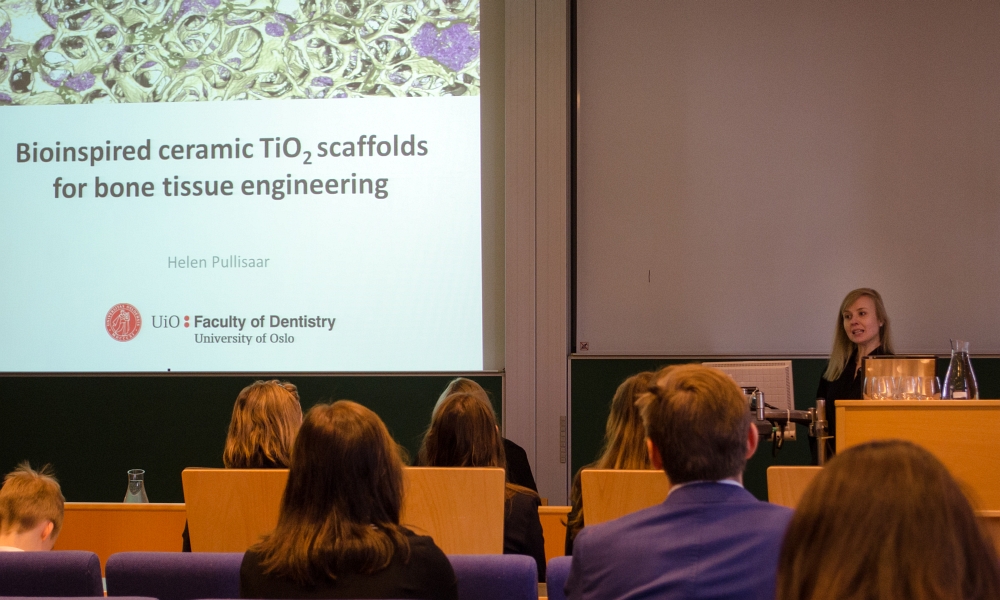
Thesis summary
The use of autologous bone graft is currently the gold standard in reconstructive bone surgery, despite its many disadvantages for the patient. A promising alternative to autografts has however emerged with the idea of bone tissue engineering, which aims to combine synthetic bone graft substitutes, progenitor cells and osteoinductive agents to support healing of bone defects.
The overall objective of the thesis was to produce bioinspired ceramic titanium dioxide (TiO2) scaffolds and to evaluate their performance in vitro. It was hypothesized that osteoinductive molecules in hydrogel-coated scaffolds would induce bone growth.
The first approach comprised of TiO2 scaffold coated with alginate hydrogel containing osteoinductive molecules. Evenly distributed alginate coating on scaffolds could act as a matrix for delivery of osteoinductive molecules like proline-rich peptides and simvastatin providing progressive and sustained release of both biomolecules. These scaffolds had low cytotoxic effect and stimulated osteoblast differentiation.
The second approach comprised of TiO2 scaffold, osteoprogenitors and alginate hydrogel containing osteoinductive molecules. A homogenous alginate hydrogel coating was created around pre-seeded osteoprogenitors on scaffolds without inducing a cytotoxic response. Alginate-coated scaffolds containing enamel matrix derivative enhanced osteoblast differentiation in primary human osteoblasts but did not induce osteogenic differentiation of the precursor cells, human adipose tissue-derived stem cells. Nevertheless, alginate hydrogel coating may have a potential for delivery of other stimulatory factors to promote osteogenic differentiation of precursor cells.
The combination of the local osteogenic effect of osteoinductive agents, progenitor cells and the physical properties of TiO2 scaffold may represent a new strategy in bone tissue engineering.
Evaluation committee
- Senior Lecturer, Dr Gwendolen Reilly, University of Sheffield, UK
- Research Scientist, Dr Anne Mari Rokstad, NTNU, Norway
- Associate Professor, Dr Lene Hystad Hove, University of Oslo
Supervisors
- Professor Håvard J. Haugen, University of Oslo
- Professor Janne Reseland, University of Oslo
- Dr Esben Østrup, University of Oslo
